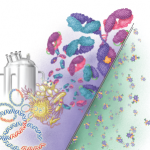Seemingly minor changes in formulation can cause major adverse effects. When a stabilizing agent in Eprex, a biosimilar of epoetin alfa used for treating anemia that’s approved outside the U.S., was changed, it led to pure red cell aplasia (PRCA) in some patients.1
“It’s very important to understand that a biosimilar agent will never be identical, at a molecular level, to its reference drug,” said Douglas W. White, MD, a rheumatologist at Gundersen Health System in Onalaska, Wis. “Variations inherent in the manufacture of biosimilars can result in highly divergent responses in humans, especially with respect to immunogenicity, as we saw with Eprex. So we want safeguards in place to minimize such a possibility and to maximize our chances of catching it early should something go wrong.”
Although Dr. Daikh has confidence that pharmaceutical companies with experience in developing biologics will maintain high-quality control, “it will be incumbent upon the FDA to ensure that all biosimilars are manufactured to the same quality and purity standards applied to the parent drugs, regardless of where and by whom the biosimilars are produced.”
The ACR strongly suggests the following standards for biosimilars, Dr. Worthing testified:
- Long-term post-marketing studies of approved biosimilars to monitor for adverse events;
- Distinct names for each biosimilar to ensure correct prescribing and dispensing, as well as monitoring and tracking; and
- Clear FDA labeling that indicates whether a drug is: a) a biosimilar or interchangeable product; b) lists all approved indications for the biosimilar; and c) specifies whether clinical data come from studies of the biosimilar or the reference biologic.
Currently, U.S. biosimilars will each have a four-letter suffix to identify their reference biologic, instead of a distinct brand name. Some rheumatologists fear this naming style will cause confusion.
“We need to be able to confidently prescribe these therapies to our patients and feel comfortable that proper mechanisms are in place for rheumatologists to monitor patient reactions to prescribed biosimilars,” said Dr. Worthing. “Rheumatologists have been working with biologics for quite some time, and our patients take them for lengthy periods of time to manage their conditions, so we have a unique understanding of the extreme complexities of these medications.”
The pharmaceutical industry also wants the new products to have memorable, meaningful names, said Geoff Eich, executive director, Amgen Biosimilars.
“It will be more accurate in the database if you can actually remember it and track any adverse events to the appropriate product,” said Mr. Eich. He’s optimistic that biosimilars will encourage robust competition that will fuel innovation. “There’s opportunity for biosimilars around the world to be very successful.”



